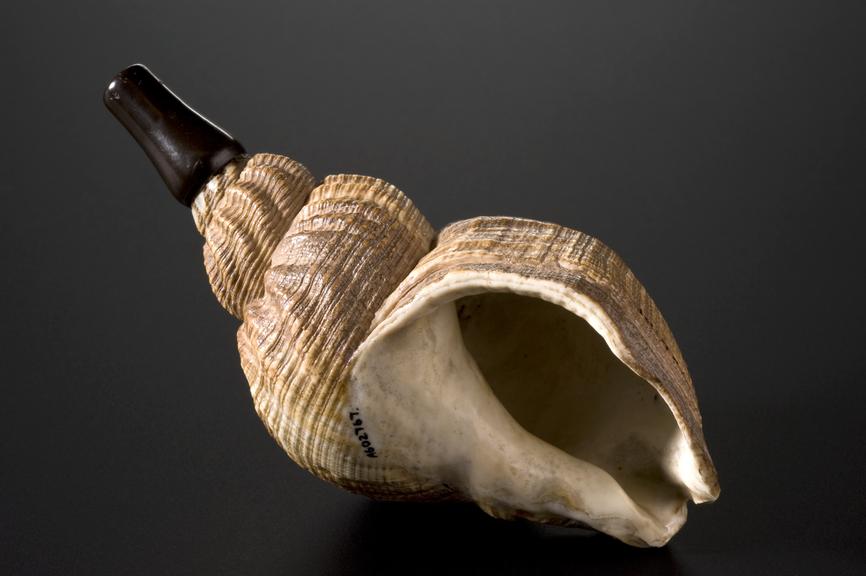Box for hearing aid made from a shell
Cardboard box for whelk shell used as an ear trumpet-like hearing aid, with added vulcanite earpiece, European, 1850-1900

Whelk shell used as an ear trumpet-like hearing aid, with added vulcanite earpiece, in cardboard box, European, 1850-1900
This ingenious hearing aid is made out of a whelk shell. These shells are found on beaches across Britain. The vulcanite tip is inserted into the ear canal. The shell acts as a trumpet. It ‘catches’ and amplifies sound to the ear drum. This vibrates and passes the sound to the bones of the middle ear, which are called ossicles. These bones also vibrate and amplify the sound to pass it to the inner ear. The hairs of the bones in the inner ear send a nerve impulse to the brain. The brain translates this into noise. The effectiveness of the shell as a hearing aid is unknown. However, it was a novel and economical response to a common problem.
Cardboard box for whelk shell used as an ear trumpet-like hearing aid, with added vulcanite earpiece, European, 1850-1900